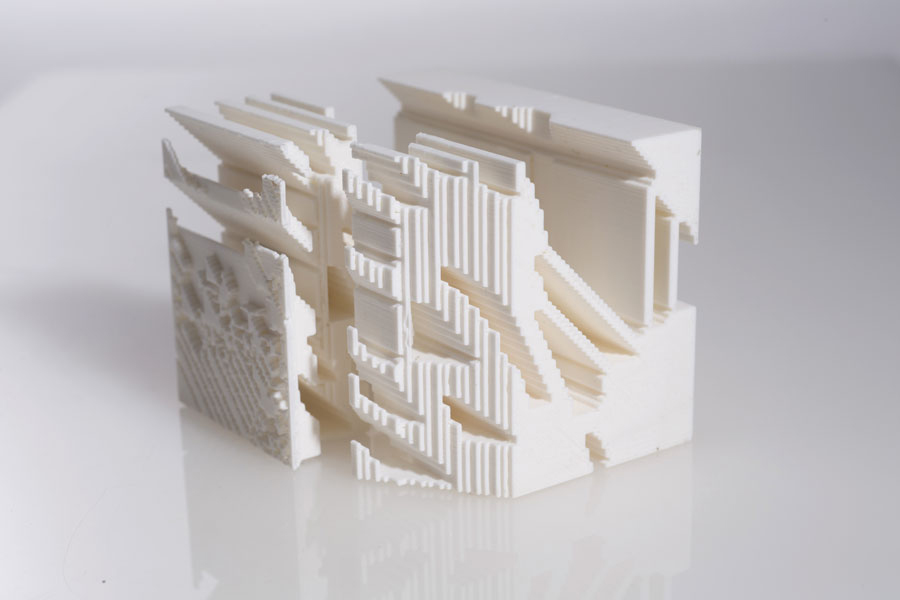Research News
3-D printing enables students, researchers to create amazing things
This study of form and space was developed by architecture students using 3-D printing. Photos: Douglas Levere
By DAVID J. HILL
Reprinted from AtBuffalo
Published January 7, 2016 This content is archived.
Imagine performing an operation tailored to a patient’s unique medical characteristics — before stepping into the operating room. Or solving an engineering challenge by building exactly the object you need. These are just a couple of the ways in which several schools and departments at UB are using 3-D printing.
Employing computer software, spools of plastic (in lieu of ink cartridges) and a device resembling a mini fridge or microwave, students and researchers can create just about anything imaginable — in intricate detail — in a matter of hours.
The technology itself isn’t all that new. As Lindsay Romano, who manages the digital workshop in the School of Architecture and Planning, explains, “It’s not that 3-D printing is so cool; it’s been around for 20 years. It’s what you can make with it. It allows our students to create things they can’t make by hand, just using their imagination.”
Students and faculty in architecture, engineering, media study, and medicine and biomedical sciences, among other departments, are using their imaginations to make some remarkable objects.
Medicine
UB’s Clinical and Translational Research Center (CTRC) is using 3-D printing to create complex structures known as vascular phantoms. The structures (right) are a breakthrough tool for surgeons, according to Ciprian Ionita, a research assistant professor in the CTRC, because the material closely resembles human tissue.
“Imagine having a department of biomedical engineers in your hospital who within five hours can give you a model of a patient to test on before you see that patient,” Ionita says. “For these kinds of complex vessels, we are unique. There are maybe four or five centers around the world that can print what we make here.”
Engineering
Engineering researchers at UB are employing 3-D printing to blend nanoparticles into materials, like this photopolymer (left), to make them self-sensing. “In the future, we may want to print small batteries or capacitors,” explains Chi Zhou, assistant professor of industrial and systems engineering. “To make it compact, we can directly print the battery onto the object itself. We won’t need the casing and everything else.”
Zhou and Rahul Rai, assistant professor of mechanical and aerospace engineering, also are working with local industry to advance 3-D printing of tiny sensors, such as this one (right). The sensors’ small size makes them suitable for biomedical and telecommunication devices, wearable electronics and more.
Zhou and his team designed their own 3-D printer to create lightweight objects (left) that can be used to test tensile strength, a measurement of the force required to pull something to its breaking point. Such research is especially useful in bridge, automobile and aerospace design applications.
While engineering faculty and students are using 3-D printers to create some pretty technical stuff, they’re also conceptualizing and printing things that have everyday applications. These parts (right), when connected, make furniture stronger and more durable.
Architecture

UB architecture students use 3-D printers to test their design ideas. “We used to make models by hand, which is very time consuming,” says Michael Silver, assistant professor of architecture. “3-D printing allows students to quickly study different variations of forms that would have been impossible to create in the past.” This object (left) is a study of form and space, and was created in the school’s “Fab Lab” in Parker Hall.



















